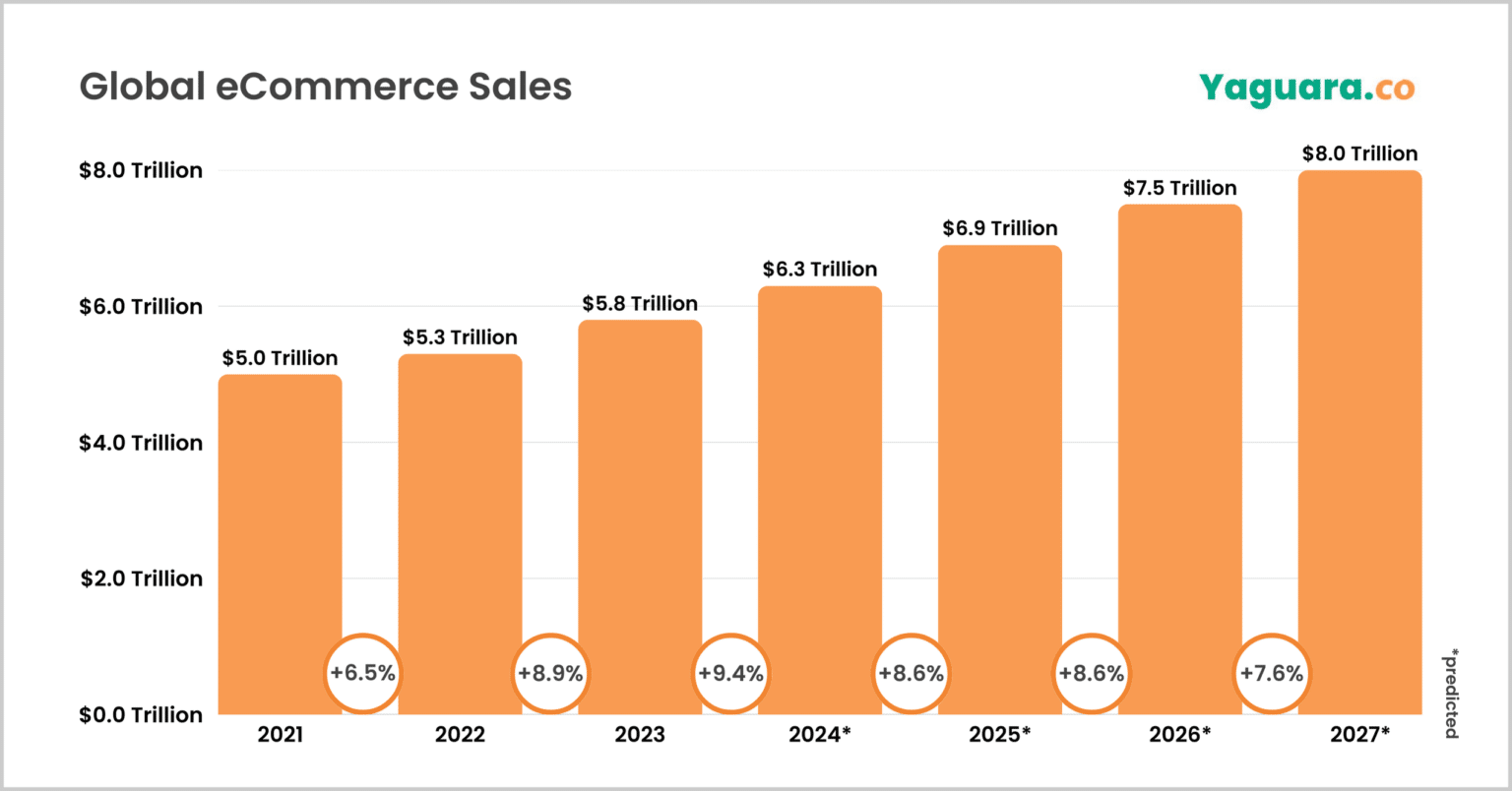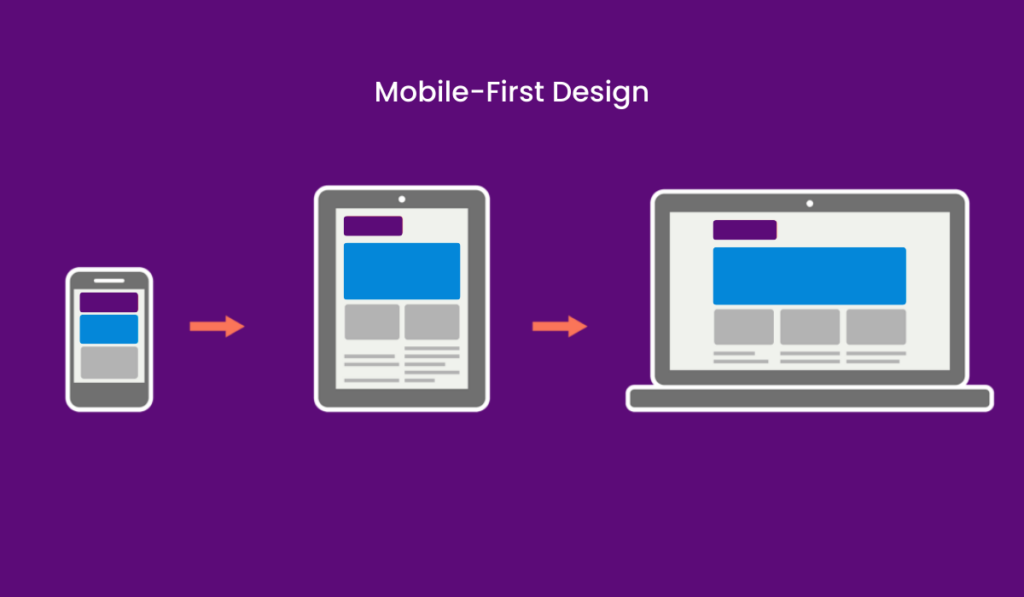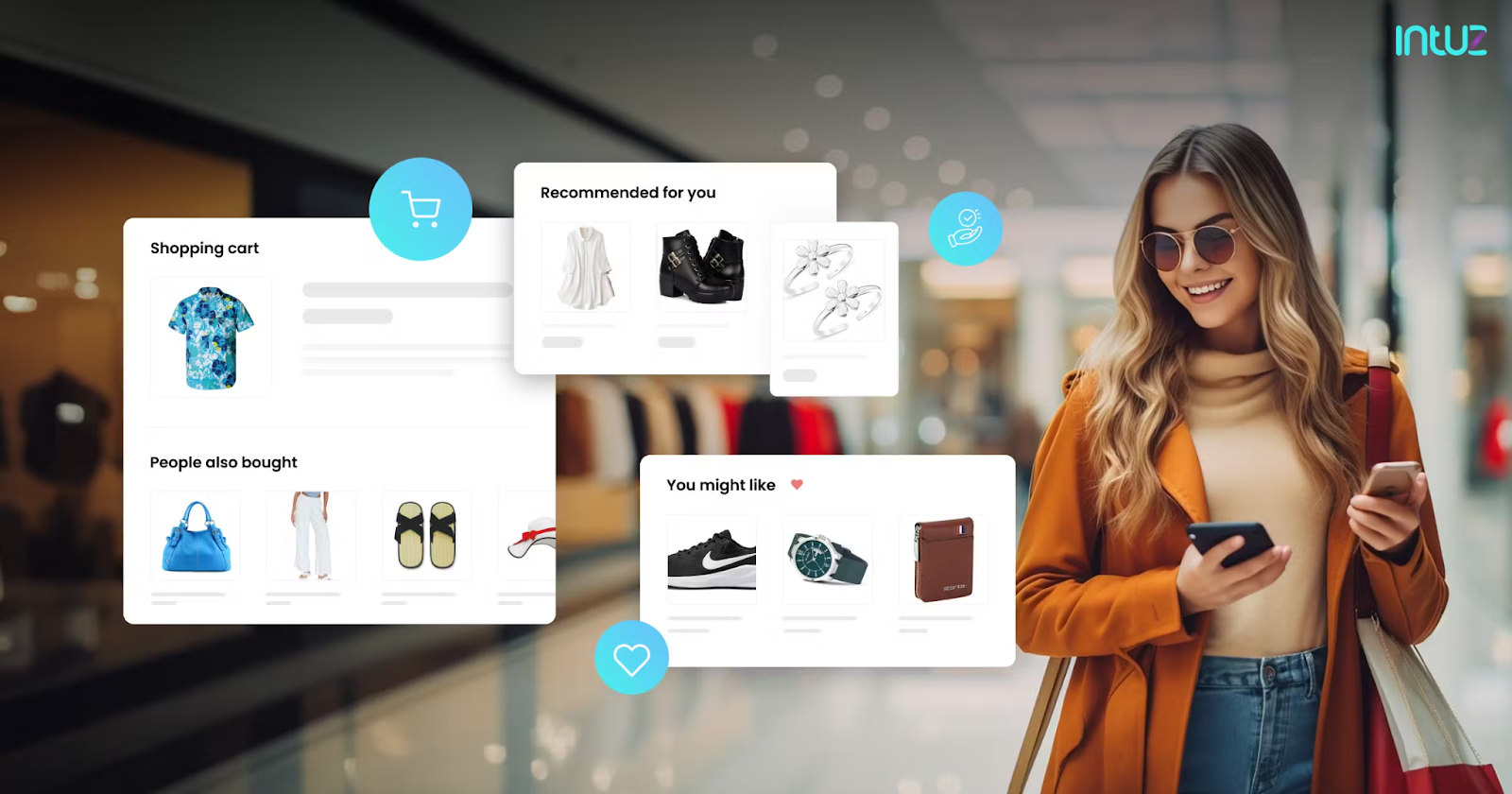blog
Top Features Every eCommerce Website Needs in 2025

In 2025, online shopping has evolved to the point where just having an e-commerce website is insufficient. You need to stand out.
Global eCommerce sales are expected to reach $6.9 trillion in 2025 and are estimated to reach $8.09 trillion by 2028. That translates into more individuals doing internet business and companies competing for their attention.

Source: Yagura
But here’s the catch: 53% of users leave a site that takes over 3 seconds to load.
If your site is slow, dull, and not a joy to navigate, you are losing sales. Simple checkout, strong security, and AI-powered personalization are no longer nice-to-haves but requirements.
This year, the difference between an average and successful store comes down to smart design choices.
Today, we will learn the features an eCommerce site must have in 2025.
Read on to find what makes your store stand out.
Features That Every E-Commerce Website Should Have
When creating an ecommerce site, understanding buyers’ wants and desires is essential. Customers desire seamless, modern, practical experiences that make buying easy.
Some buyers’ unique features for e-commerce websites include:
1. Smart Product Search: AI-powered Personalization
In 2025, consumers expect eCommerce sites to be fast and easy to use. A robust product search platform is now a requirement. Customers will click away if they can’t quickly find what they want.
That’s where AI personalization enters the picture. Through analyzing shopping behavior and browsing history, artificial intelligence can offer products that match each consumer’s style, driving conversion and happiness. Many businesses now rely on expert web development services in the USA to integrate AI-driven features into their eCommerce platforms.
In fact, 73% of businesses agree that AI will improve personalization strategies.
Searching is effortless when paired with intelligent filters, such as price, size, color, type of fabric for apparel, or tech specs for electronics.
This powerful search functionality and AI-driven recommendations make browsing an intimate experience. They guide users to the appropriate products and make shopping enjoyable and effective.
2. Mobile-First Design and Fast Loading of Page

Source: Kobiton
Today in 2025, most people shop on their phones. Mobile-first design means that your eCommerce site is designed to work well and look fantastic on small screens first, not desktops only.
Over the last six months, 79% of mobile users made an online purchase using their mobile devices.
As an ecommerce store owner, you must stay updated with the latest mobile commerce trends. You can’t ignore mobile consumers, whether you’re using Shopify or another platform to sell online. It must feature big buttons, easy-to-read fonts, quickly loading pages, and effortless navigation.
A slow site adversely affects sales. If your page takes ages to open, customers won’t wait around. They will depart and purchase another individual.
You will also require robust hosting and well-optimized photos to ensure your pages are light and fast. A minimalist, mobile-first design will also make Google rank your site better.
3. Ease in Registration Process
A simple registration and login process is one of the essential online shopping features of an ecommerce website and the first step toward converting visitors into customers. Offering simple sign-up choices via email, phone, or social media accounts makes this process easier for users. Make sure users can complete registration with a few clicks.
For example, one-click sign-up with Apple ID provides a seamless experience and helps users save time.
Over 60% of users prefer social login options because of convenience, while other forms lead to a 25% increase in the drop-off rate.
4. Simple One-page Check Out
A slow, disorienting checkout is intimidating to customers. When fast and seamless, customers buy more. Guest/one-page checkouts allow customers to place orders quickly.
Adding mobile-friendly features, like auto-fill address and big buttons, makes it even more seamless. Consumers don’t have time for more complexity or hidden fees.
Offer payment options (credit/debit cards, PayPal, wallets) and highlight features like SSL encryption.
For example, companies like Amazon have fine-tuned the one-click checkout, ensuring minimal cart abandonment and increasing conversions. A one-page design facilitates speedy and understandable checkout.
Mobile-compatible forms and buttons minimize mistakes. Show fees early to avoid surprises later.
Do you know, about 70% of cart abandonment is due to checkout usability issues, mostly from mobile device.
5. Sustainability Features
Sustainability aspects come into play for e-commerce as the customer becomes smarter in selecting products and brands.
Being capable of offering customers ‘carbon-free’ delivery, helping green products, and informing customers more about their eco-friendly practices can go hand in hand with the new, green-conscious customer.
Providing more information about the origins, the packaging, and the moral quality is also becoming a significant factor in buying.
6. Progressive Web Apps and App-Like Experience
Progressive Web Apps (PWAs) offer sites a native-app experience and capability, fast loading, offline access, and push notifications without downloading an app from a store.
PWAs cache critical assets so everyone enjoys near-instant performance on return visits, even without internet access. Most eCommerce websites now support PWAs to boost engagement and conversions.
Example: A fashion retailer launched a PWA and saw repeat visits increase by 45% and page load time fall by half.
Implementation suggestions:
- Cache pages and assets using service workers.
- Add a reactive UI to respond to the screen’s height and width.
- Enable push and “add to home screen” functionality.
PWAs fill the gap between web and native app experiences, quick, immersive, and consistent.
7. 24/7 Customer Support with Chatbots
Customers always have questions, even at strange times. Chatbots assist by providing simple questions immediately, without delay. They can escort users through checkout, shipping, returns, or product details, keeping consumers satisfied and on-site longer.
- Chatbots are always available, even when employees aren’t.
- They reply to the easy stuff quickly.
- Let your human team devote its time to large issues.
An IBM report shows that chatbots can handle up to 80% of routine inquiries.
Tips:
- Implement a bot for FAQs (“Where’s my order?”)
- Offer a button to converse with a human agent
- Give return and sizing assistance clearly in the chat path
8. Strong Product Pages with Personalization

Source: Intuz
Your product pages need to do more than show products- they need to sell them.
Add high-quality images, videos, descriptive details, and current availability.
Zoom features and 360° views shouldn’t be forgotten. These increase the customer’s confidence in their decision.
Go one step further into personalization. Provide “You May Also Like” offers based on customer behavior. Present the last viewed products. Provide customized bundles. Personalized product pages make customers spend more time on-site and increase conversions.
9. Headline-level SEO and Content Strategy
Optimize product page titles and descriptions using plain language and organized data (such as schema markup). Include brief how-to guides, FAQs, and size charts to assist shoppers and enhance search rankings.
Example: Creating a “how to size shoes” guide increased organic traffic by 25%.
Tips:
- Use descriptive titles (“Red Canvas Sneaker – Men’s Size 10”).
- Include FAQ schema for rich search snippets.
- Write helpful mini-guides, such as “How to measure feet”.
Most companies in the USA search for web development services, specifically eCommerce web development, to create SEO-aware, easy-to-use websites. Both SEO and consumer trust are based on a solid content foundation.
10. VR/AR Shopping Experience
AR and VR technologies are particularly effective for the way customers interact with products in the online space. Similar to clothing, accessories, or cosmetics, Avatars, or even augmented reality software for determining furniture placement in a room, so that one can get an idea of what the product looks like in reality before purchasing it.
For items like furniture, AR (augmented reality) previews help people visualize at home. These cutting-edge technological experiences reduce the cost of return and add customers’ faith in online purchasing.
11. Advanced Level Filter and Sorting System
Members will not scroll through limitless lists. They are expecting quick, relevant answers.
A robust filter and sorting functionality puts them in control. Make them sort by size, cost, rating, color, or shipping time. Include dynamic filters that change with inventory.
Search results should be quick and accurate. Combine AI with clean UX, and your customers find the right products faster. That means fewer drop-offs and more purchases.
15. Voice Search and Conversational Commerce
With the increased popularity of smart devices, voice commerce is gaining ground as the latest trend. Voice search-enabled functionalities allow customers to search for products, browse products, and even order products via voice instructions.
This demand mandates product descriptions and search functionality to be optimized for NLP algorithms. This functionality is convenient and resolves accessibility issues, so individuals with vision or mobility impairments can browse much more comfortably.
Create content that responds to short questions like “What size fits me best?” and employ conversational language on product pages.
Tips:
- Use concise, clear questions in FAQs.
- Include “voice search optimized” tags on appropriate products.
- Employ questioning chat with the text, “What are you looking for?” in simple language.
To Summarize
In 2025, e-commerce will no longer merely have an online storefront but will build fast, intelligent, and effortless shopping experiences. From personalization powered by artificial intelligence and mobile-centric design to sustainability aspects and immersive AR shopping experiences, customers’ expectations are greater than ever.
All these features, which we’ve mentioned, serve one purpose: keeping customers active and loyal.
If you’re eager to reimagine your eCommerce site with future-forward solutions, Tangence can help you create, refine, and expand your store for optimal impact.
